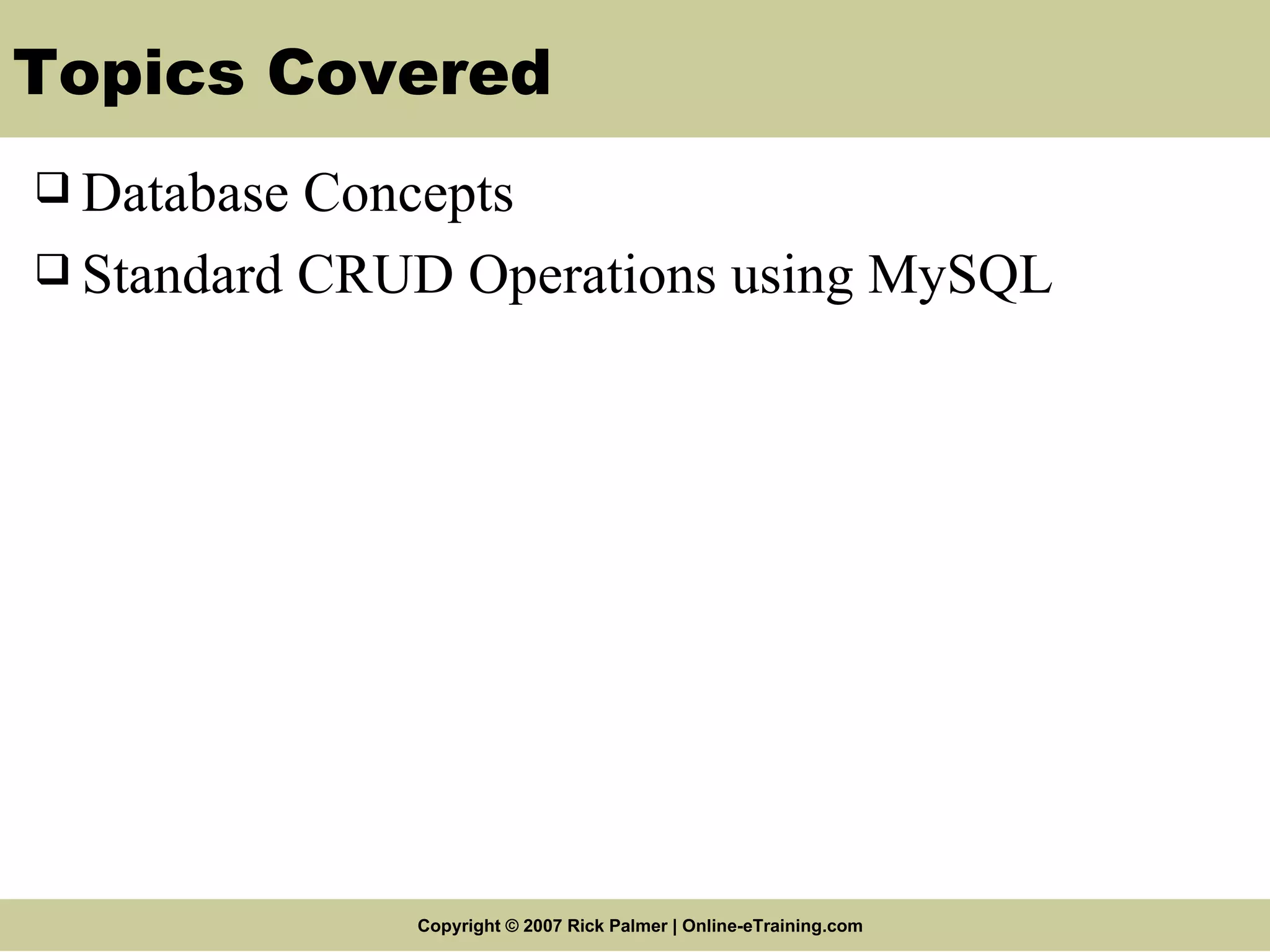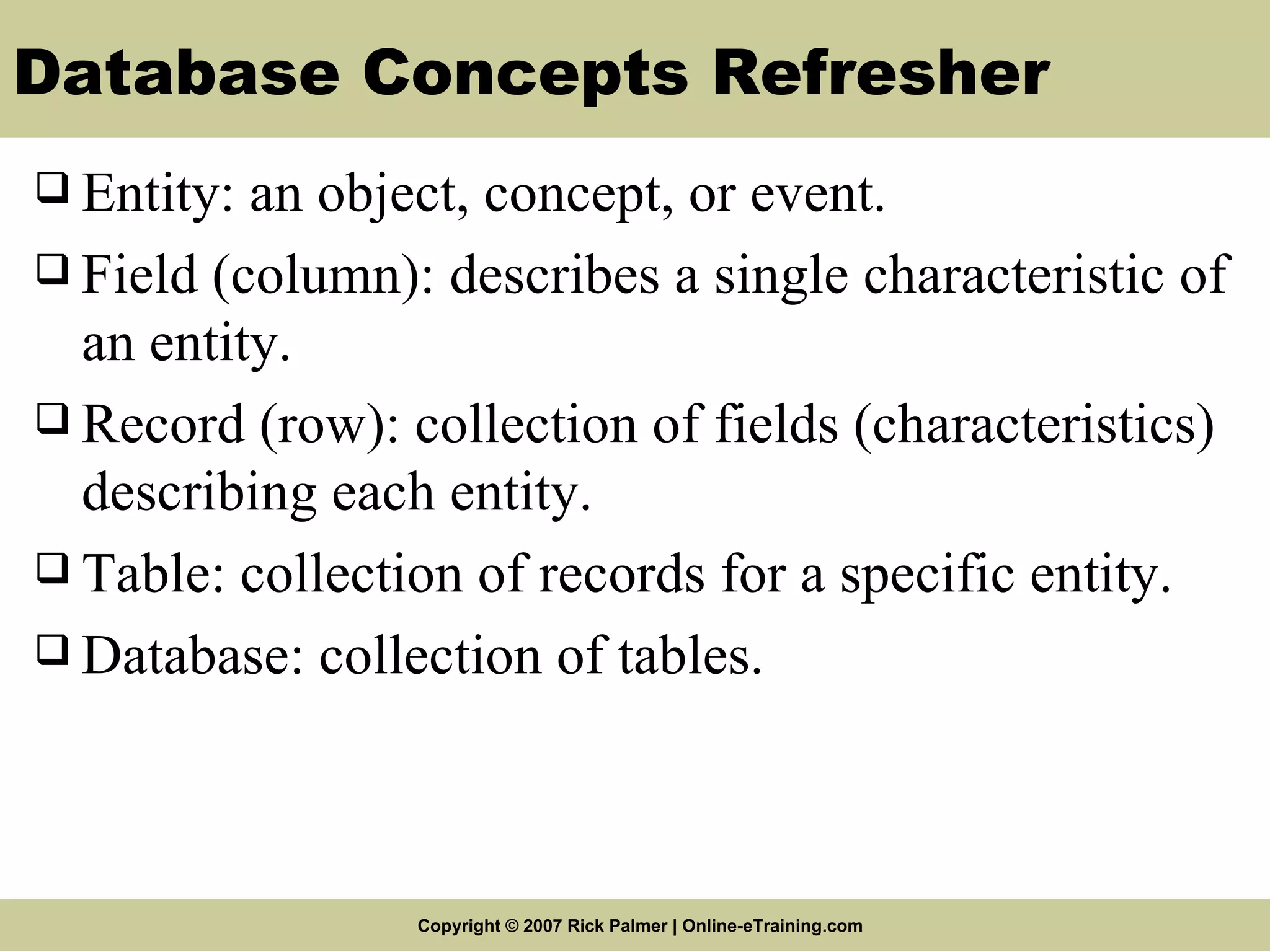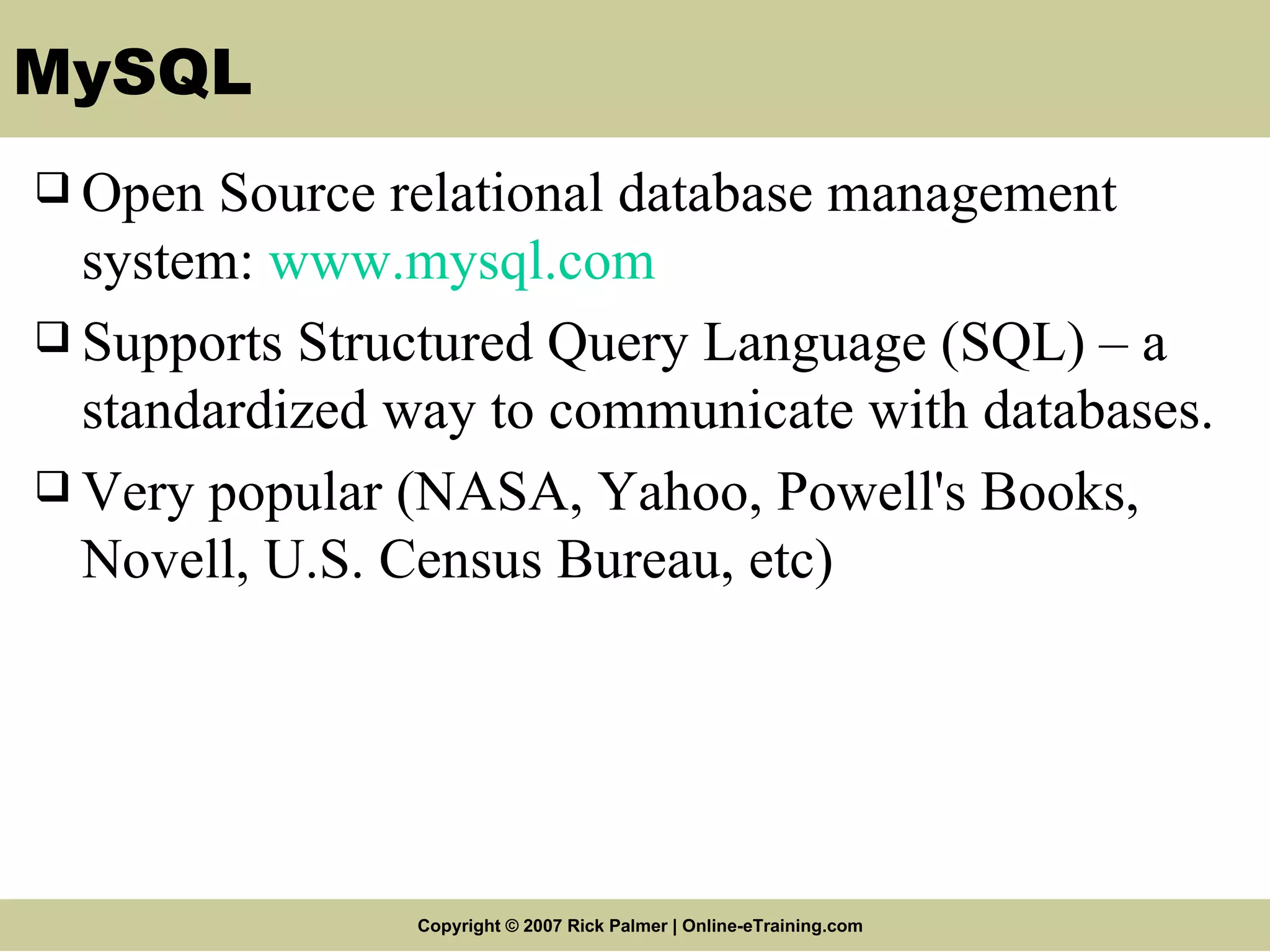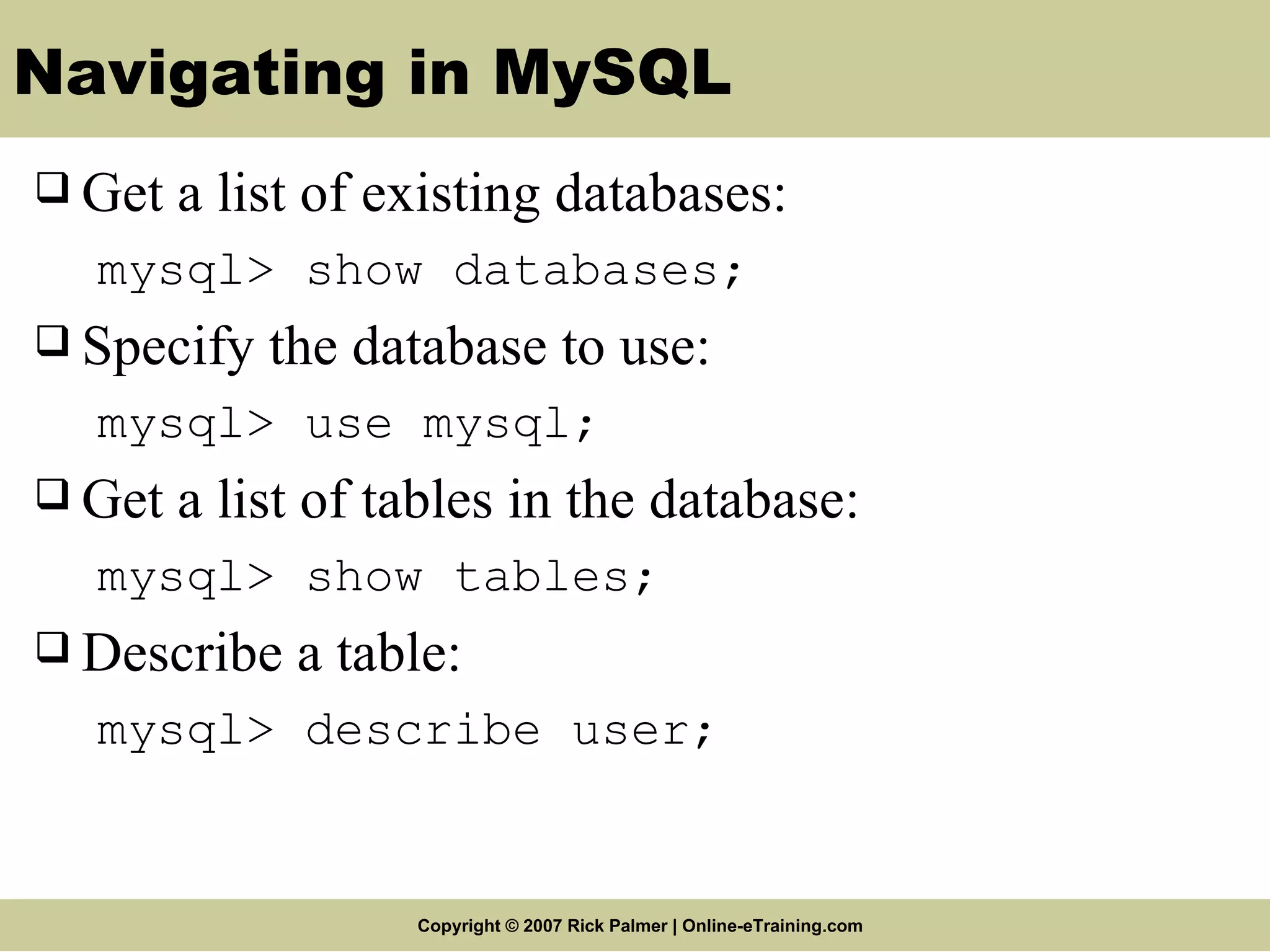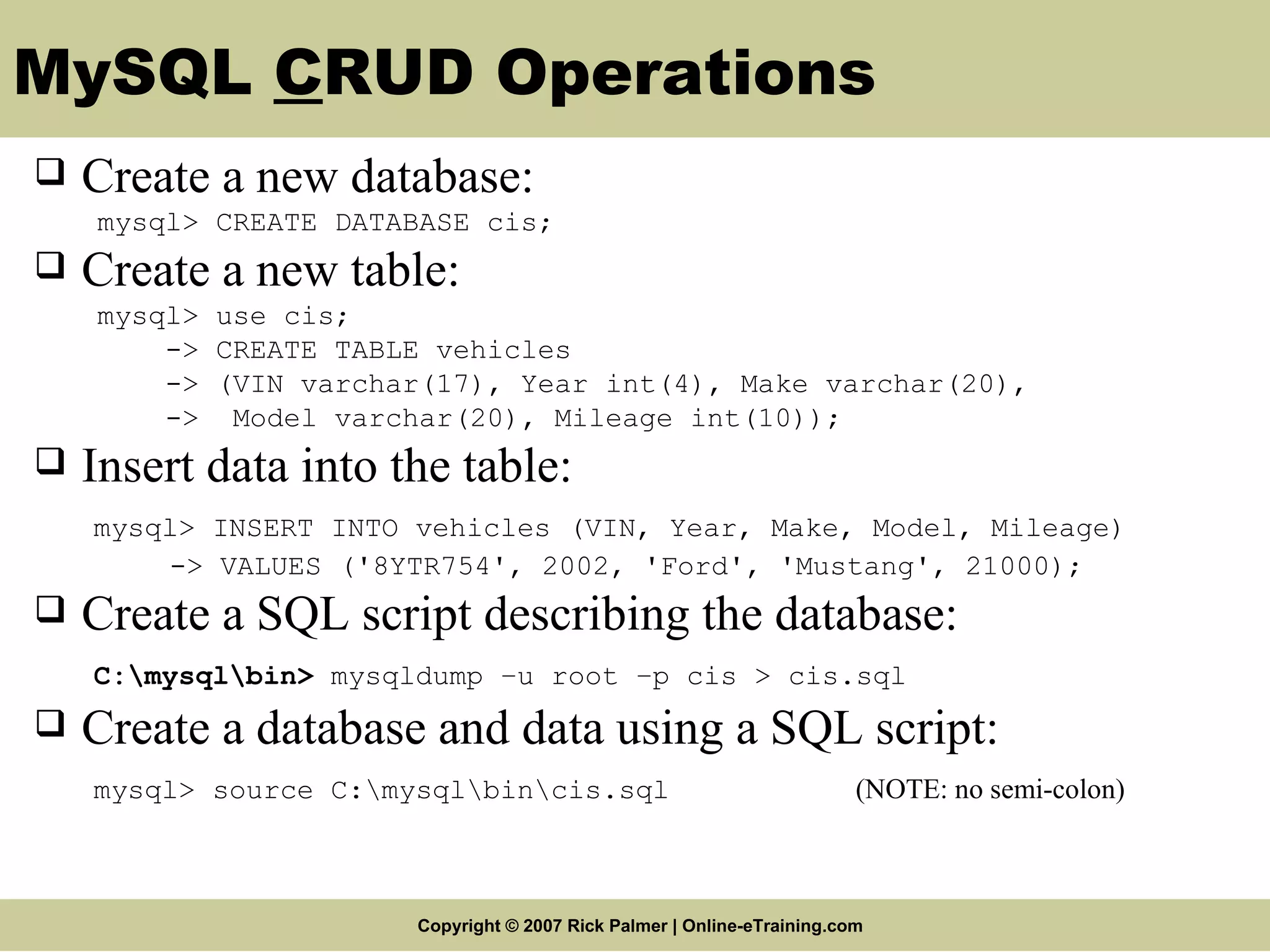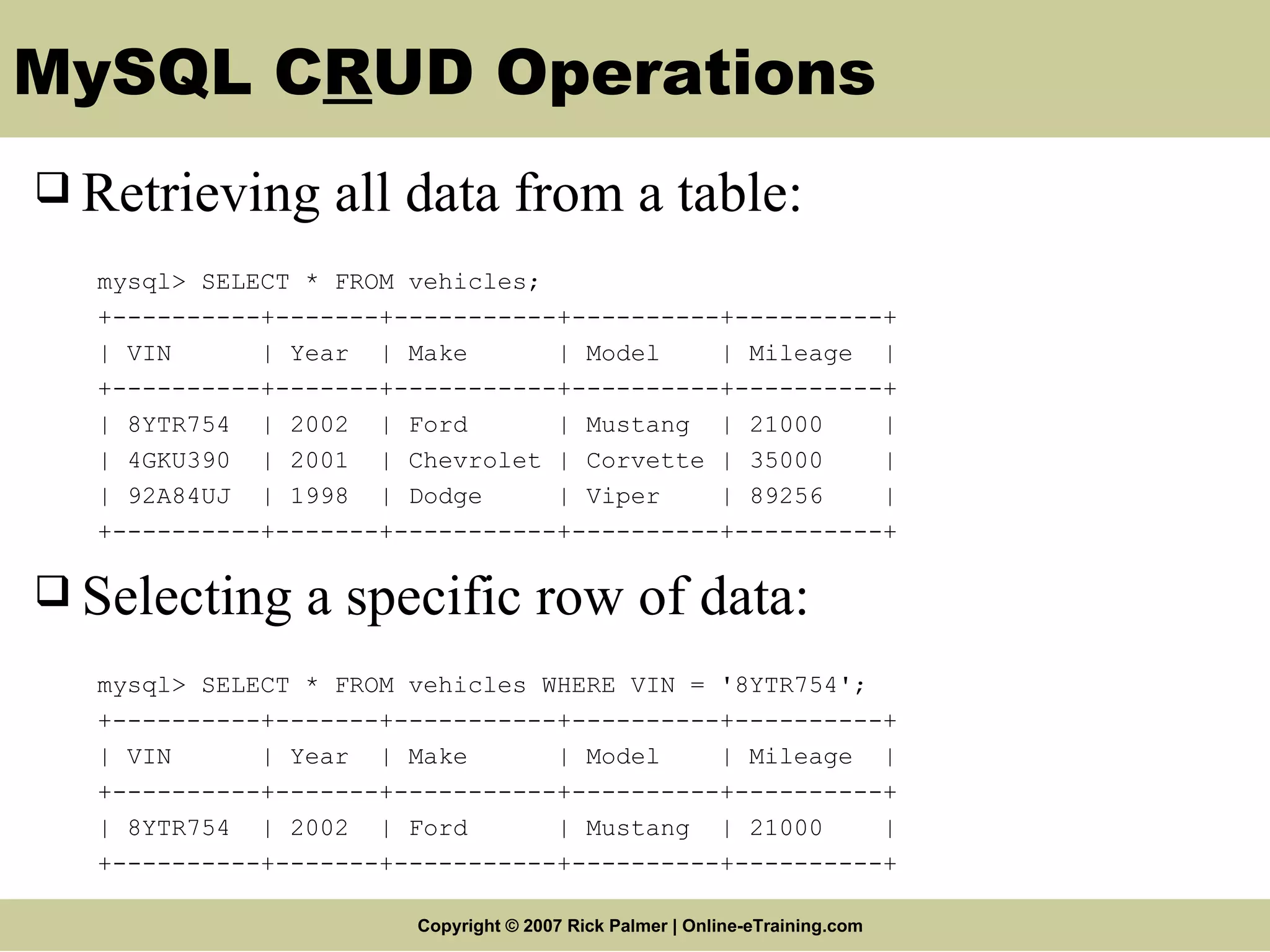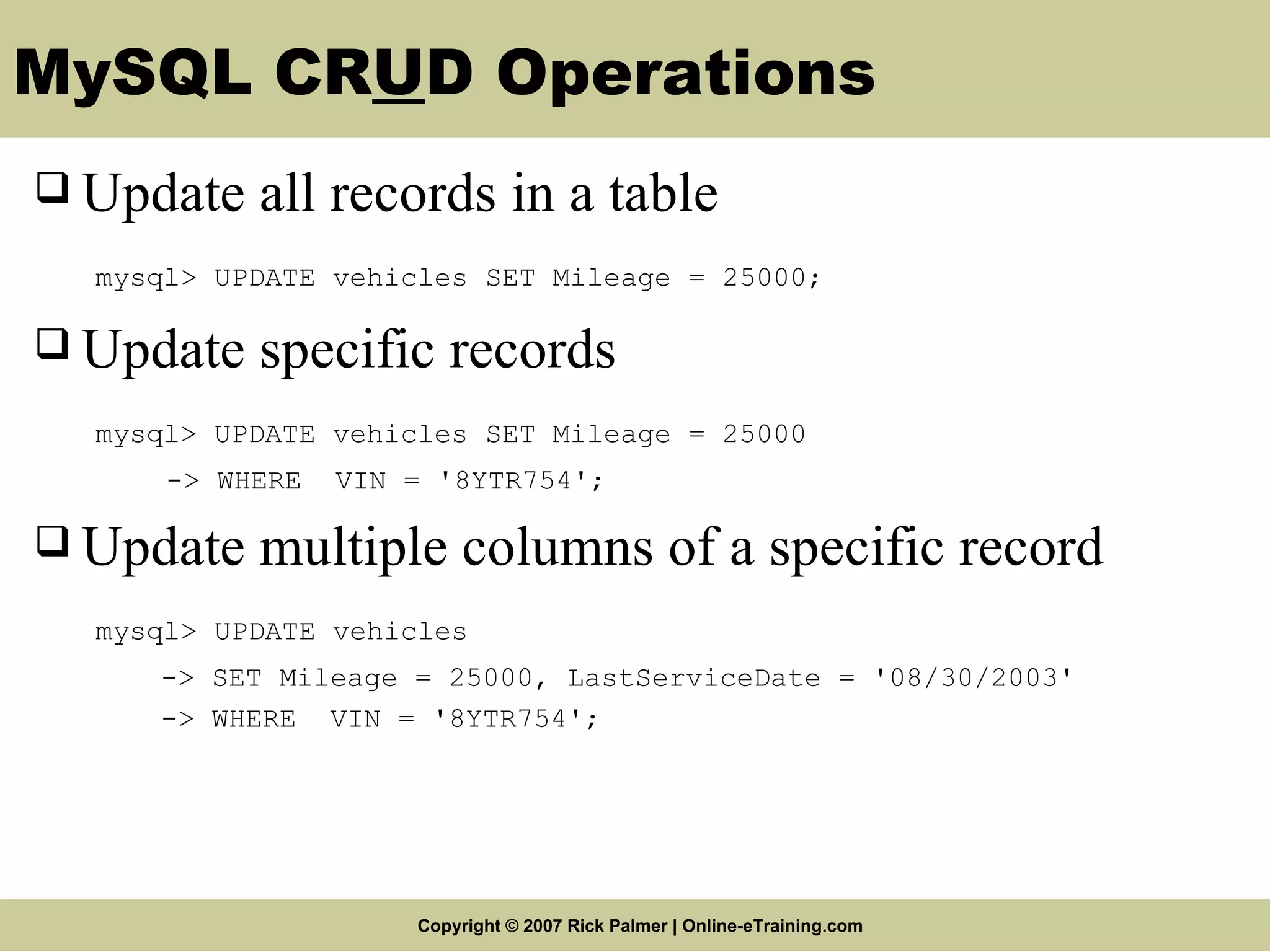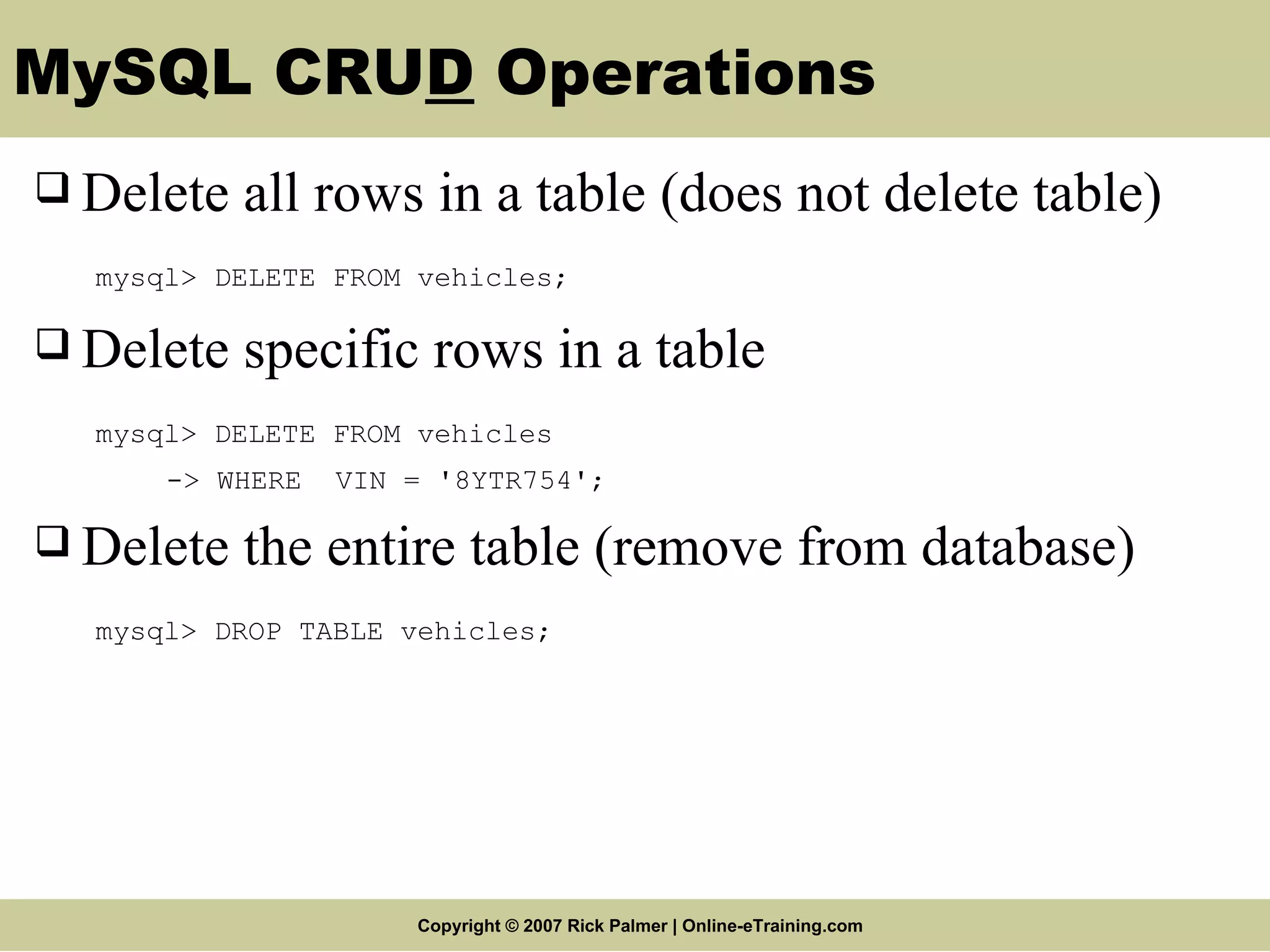The document provides an overview of MySQL database concepts and basic CRUD operations. It discusses database, table, record, and field concepts. It also demonstrates how to navigate databases and tables in MySQL, and perform basic create, read, update, and delete operations through queries like CREATE, SELECT, UPDATE, DELETE, and DROP. These include creating databases and tables, inserting and retrieving data, updating fields, and deleting records or entire tables.
![MySQL Database Overview MySQL Database Overview Instructor: Rick Palmer, SCWCD [email_address]](https://image.slidesharecdn.com/mysql-lecture2442/75/MySQL-lecture-1-2048.jpg)
